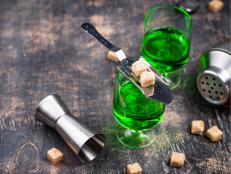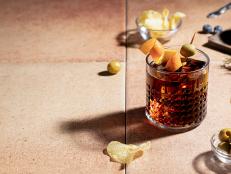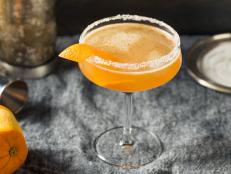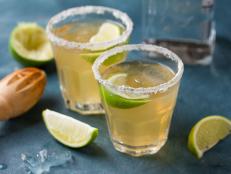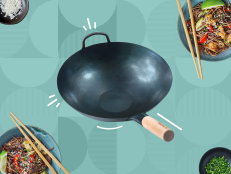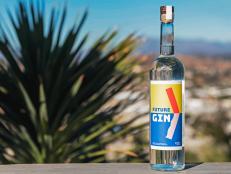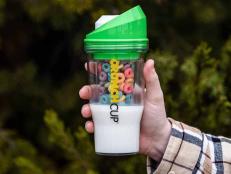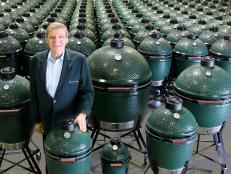What Is Sake?
Everything you need to know about Japan’s national beverage.

LAW Ho Ming/Getty Images
By Layla Khoury-Hanold for Food Network Kitchen
Layla Khoury-Hanold is a contributor at Food Network.
You’ve likely spotted sake on Japanese restaurant menus and cutting-edge cocktail bars. But what exactly is sake? For more information, we consulted sake expert Henry Sidel, Executive Commercial Director at Dassai, a craft producer of premium Japanese sake. To learn more about some of our favorite bottles, check out our guide, 5 Best Sake Picks.
What Is Sake?
Sake is a Japanese alcoholic beverage made by fermenting polished rice, water, koji, and yeast.
Often referred to as Japanese rice wine, sake is the national beverage of Japan and occupies an important place in Japanese history. “The first records of sake-making date back to the 3rd Century AD. By 789, there was a brewing department in the Imperial Palace in Nara,” Sidel says. “By the 15th century, there were more than 300 sake breweries in Kyoto. At its height, there were over 10,000 sake breweries in Japan. Now there are under 1,500.”

Koji Hanabuchi/Getty Images
How is Sake Made?
Sake is made by polishing rice, then washing, soaking and steaming it. Next, the koji is made using 20 percent of the steamed rice. “Koji is a mold that comes in powder form that is sprinkled on steamed rice to convert the starch into sugar,” Sidel says. “These yeasts are numbered, starting at #7 and going up to #18. These main types of yeast are maintained by the Central Brewers Association, from which many sake makers choose to buy these yeasts annually, while many breweries also keep their own yeast.” Then, the yeast starter is made, and the rice is fermented for about 30 days before being pressed, bottled and stored.

gyro/Getty Images
Is Sake Aged?
Sake is not aged, says Sidel, "but it is allowed to rest for about one month, so the flavors settle."
5 Types of Sake
Sidel describes five common types of sake and their characteristics:
Futsushu Sake: basic sake, usually served warm. Futsushu is generally rich, simple and inexpensive.
Ginjo Sake: fruity, aromatic, dynamic. Some consider this sake very similar to wine.
Honjozo Sake: earthy, nutty. Honjozo also indicates that distilled spirit is added at the end of fermentation. This doesn’t make the sake higher in alcohol because water is also added. However, it can make the sake lighter in body and more rounded.
Junmai Sake: Junmai is a level and a category, which is the opposite of Honjozo. No distilled spirit is added to Junmai. Junmai means “pure rice” and tends to be richer in flavor.
Nigori Sake: unfiltered, cloudy sake. It still has the sake “lees," a by-product of sake production.
Standard Sake vs Premium Sake

John Banagan/Getty Images
Sidel explains that there are two main levels of sake: Futsushu (standard sake) and Tokutei Meishoshu (premium sake). “Premium sake consists of three levels, which are determined by how much the rice is polished down to remove fats and proteins on the outside of the grain and isolate starch in the center of the grain,” Sidel explains.
3 Levels of Premium Sake
Junmai: made with rice that is milled down to 70 percent or less.
Junmai Ginjo: made from rice milled down to 60 percent or less.
Junmai Daiginjo: the most premium level; made with rice milled down to 50 percent or less. Dassai produces only Junmai Daiginjo sake.
How to Drink Sake
You can drink sake chilled, at room temperature or warm. Sidel recommends serving fruity, premium sakes like Junmai Ginjo and Junmai Daiginjo chilled, like white wine, and in a wine glass. He also notes that you can let these sakes sit out and come up to room temperature, at which point they “will open up and show a range of flavors and aromas.” If you're drinking Junmai and Honjozo sake, Sidel recommends experimenting with a range of temperatures. “Room temperature and heating can work,” he says.
How to Pair Sake with Food

ahirao_photo/Getty Images
Sidel believes sake has extensive food pairing capabailities. “Junmai Ginjo and Junmai Daiginjo pair great with elegant foods, foods with acidity; great with sushi. Junmai and Honjozos go well with richer foods,” he says. “However, sake is very versatile, so even the Junmai Daiginjo we make will go great with salad, yakiniku, yakitori and other rich dishes.”
Sake vs Soju
The main difference between sake and soju is that sake is brewed like a beer and soju is distilled. In “Japan, the equivalent to soju is shochu,” Sidel explains.
Related Links:






















